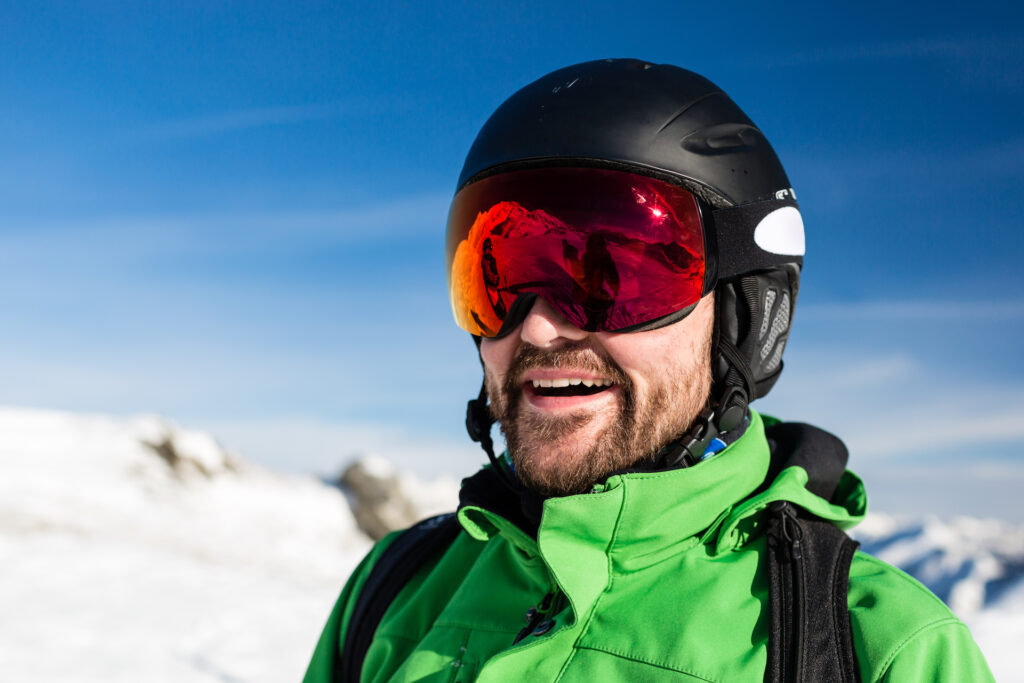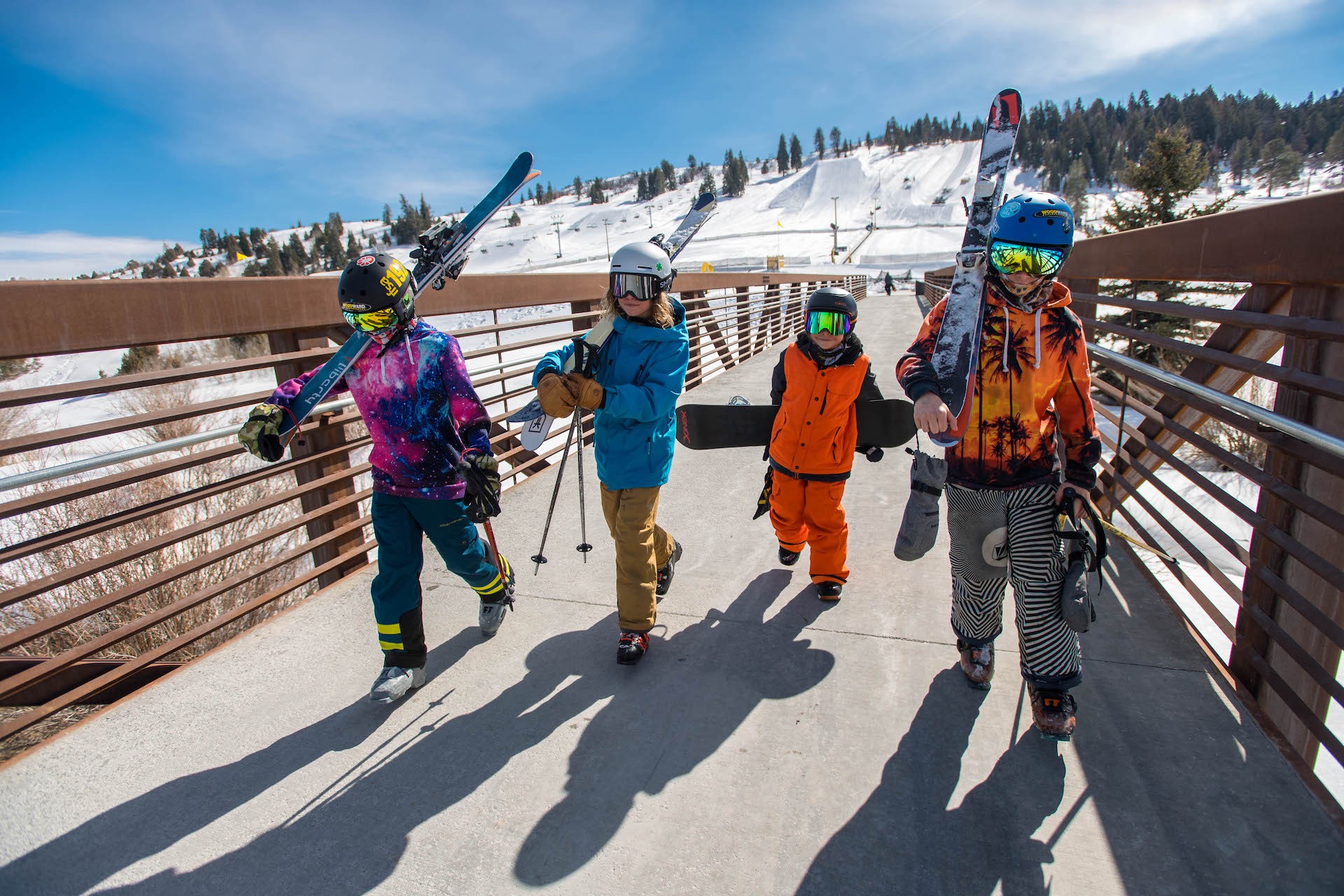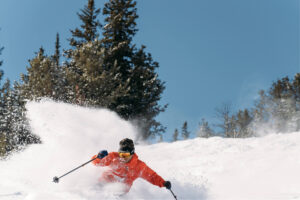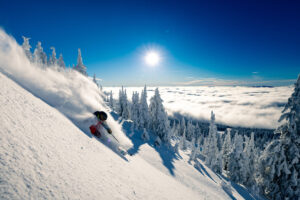When you’re starting out skiing or snowboarding, it can be tough to know where to start with buying gear, and especially if you’re on a budget. The amount of options, not to mention the cost, can quickly become overwhelming to skiers and riders looking to commit to their own gear, and especially if you’re buying winter gear for the whole family. New skis, for example, often cost well over $500. But fear not, because you can still build a solid winter kit without breaking the bank. So if you’re ready to hit the snow with some upgrades to your ski or snowboard gear, continue reading as we show you how to find used and discounted gear.
How To Find Discounted And Used Ski Gear
The Dos And Don’ts Of Buying Used Ski Gear
Before you begin shopping for used gear, there are a few things to know. First things first, we highly recommend buying any protective gear, and especially helmets, new. There’s no way to know how many accidents its been in, or if the foam inside (the part that absorbs shock and protects your head) has degraded or broken. Even if the outside looks fine, it’s not worth the risk. With that being said, discounts on new helmets are often easy to find, especially on Black Friday, Cyber Monday, and during other holiday sales. Retailers like Sierra Trading Post, REI Outlet, and Steep & Cheap offer new gear at a discounted price, meaning that you can get the quality you need while also saving some cash. Note that REI, and other shops and retailers sell lightly-used gear.
Before you start looking at boots and skis, ensure that you know the size you’ll need. If you’ve rented before, think back to the sizes and models you used. They can be a great jumping off point for purchasing your own gear. The best case scenario is to venture into a nearby ski shop to get measured and fitted. Keep an eye out, too, for when ski resorts host demo days.
Many of our gear guides go into more details about what to consider as you’re shopping for skis, snowboards, boots, and more. When in doubt, ask an expert.
Advantages And Disadvantages Of Buying Used Gear
Benefits
One of the biggest advantages of buying used ski gear is that you can significantly save money. You may find higher-end equipment at a much lower cost, allowing you to score models that you might otherwise miss out on. In some instances, you can save up to hundreds of dollars, which can help you afford that season pass you’ve been jonesing for or allow you to splurge on lodging. Additionally, buying used gear is the more sustainable choice, since you’re reusing gear that’s kept out of landfills.
Drawbacks
While there are several advantages to buying used snowboard and ski gear, there are also some disadvantages to consider. Used ski and snowboard gear may have hidden flaws, like core damage, which is hard to detect without a professional inspection. Edges may be rusted and bases could be worn, requiring repair before use. Additionally, bindings may be outdated, damaged, or incompatible with some boots.
You’ll also have a limited number of options, if any, when it comes to customizing your snowboard/skis. In most cases you’re taking the used skis or snowboard as-is. This means that you’re responsible for repairs or replacement if something unexpectedly breaks or fails. You can decrease this risk by carefully examining gear before purchasing. Buying from someone off of a website like Facebook or Craigslist often comes with the biggest risk. When you’re shopping for used skis or snowboard gear, we recommend buying from a ski shop, where the gear is more likely to have been inspected.
How to Spot Quality
Let’s dive into how to spot quality, beginning with ski and snowboard boots. Before you try boots on, look for cracks, deep scratches, or warping on the outer plastic shell and sole. These things are more than just cosmetic flaws, they can impact the safety of your gear, leading to potentially serious injuries on the mountain. Press the front tongue (where your ankle would go) away from the heel of the boot, with your hands, checking stiffness. If they feel super soft and easy to press apart, then they’re likely close to the end of their lifespan.
While you’re examining the outside of the boots, check that all the buckles, straps, and adjusters work smoothly. They shouldn’t be bent, overly loose, or broken. Next, remove the liners and look for flattening and tears. Those with holes or too much compression won’t provide warmth or comfort. Some boots may have liners that are moldable to the wearer’s feet. However, research the brand first, as some are not re-moldable after they’ve taken form. Try them on before you commit. Do the boots feel comfortable and stable? A good pair of ski or snowboard boots are snug and supportive, but not so tight that they hurt. Bend your knees to further check stiffness and comfort. Your toes should not touch the end of the boot.
If you’re shopping online, examine product listing photos closely and look for detailed measurements, especially of the footbed and width. We always recommend visiting a professional boot fitter to ensure that you’re searching for the proper size before purchasing ski or snowboard boots online. Ski and snowboard boots should not be more than a few years old.

Moving onto skis and snowboards themselves, make sure to examine the top sheets for deep gouges, peeling layers, cracks, or missing pieces. Bases should be smooth and waxy. Edges should be smooth, too, and free of rust, cracks, and bends. Use your hands to feel the product and check for flaws that may be hard to see. While small scratches or scuffs are normal, large signs of damage can compromise performance and safety.
Similarly, bindings should not be cracked, loose, or rusty, and they should be less than 10 years old. As you examine them, check that your boots are compatible. Make sure that they click securely into the binding and release with some pressure. If they’re loose or take a lot of pressure to release, they either need to be adjusted by a professional or are incompatible. The good news is that most modern boots have GripWalk soles, which are widely compatible with modern bindings. Before you commit, have a professional ski tech double check compatibility and release.
Outerwear, like coats and pants, can be bought used, but watch out for signs that it might be at the end of its lifespan. Make sure that the zippers work and tug on the seams to ensure that they’re still firmly intact. Look for holes that are too big to be patched or closed. Finally, check that the waterproofing still works by pouring some water over it to make sure that it beads off. If you find a garment that you love, but that is no longer waterproof, buy a can of Nikwax Tech Wash, which restores water repellency.
When you’re looking at goggles, check for deep scratches or cracks in the lenses and frames. Also check for delamination, where the lenses begin to separate. Damage can impact performance and visibility. The foam around the goggles should not be overly compressed, flaky, or covered in mildew, and straps should still have their elasticity. With any used gear, it’s always a good idea to ask the seller for details on how the item has been used, stored, and maintained.

Where To Shop: Ski Swaps, Ski Shops, And Online
Ideally, you should purchase used gear in-person to make sure you can examine it. Many ski shops sell a wide selection of used gear and their employees are available to answer questions and help you make an informed decision. Keep your eye out on ski swaps near where you live. One of the benefits of buying from a ski swap is that selections are curated and sometimes receive tune-ups or repairs before they’re put up for sale.
Ski swaps are typically held during the fall or early winter, right as the season is beginning. Often held at resorts, ski shops, convention centers, or fairgrounds, ski swaps are an excellent opportunity to browse from a wide variety of sellers, including individuals, retailers, and sometimes even ski teams. Each event is unique, but they often include knowledgeable volunteers to help you find options that fit your needs and budget.

Local classifieds can also be a great resource when you’re pursuing used ski and snowboard gear. Platforms like Craigslist and Facebook Marketplace can help connect you with other people in your area who are looking to sell their gear, and they’ll sometimes offer a great price or negotiate. Plus, buying locally is more sustainable and will save you money on shipping costs. Be sure to communicate clearly, ask plenty of questions, and use caution when meeting up with people you find online.
Online stores sometimes also present great deals, specifically during holiday shopping periods or during off-season periods when they’re eager to move inventory. As with any item, purchasing online comes with a unique set of risks, like misrepresented products or shipping mishaps. To mitigate the risks, read other customer reviews to gauge reliability, investigate return policies for clarity, and closely examine product listings, which should always have specifications and photos. Be wary of websites with vague product listings, low-quality photos, or a lack of return policy.
Some of the most well-respected brands in the outdoor industry, like Patagonia and The North Face, even have websites dedicated to reselling used goods at a discounted price. Items are cleaned up and repaired before they’re listed for sale again, coming with a steep discount.
Read more of our gear guides, like our guide to buying the right skis, here.
Header image ©Woodward Park City/Scott Markewitz





